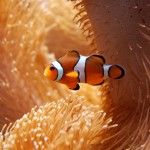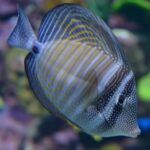If you’ve been following our blog posts, for a while, you’ll know that there are all sorts of strange critters that might show up in your aquarium. Some, like spaghetti worms and peanut worms, are unsightly but not harmful. Others, like the ones on the list of unwanted aquarium hitchhikers, are another story!
Today we’re discussing another creature that can pop up in your tank unexpectedly: the pineapple sponge. Keep reading for everything you need to know about what a pineapple sponge is and whether they’re harmful or not.
What is a pineapple sponge?
Pineapple sponge is a common name for the genus Sycon, a type of tubular calcareous sponge of which dozens of different species exist. All of them are pretty small, with a maximum size of only around 3”. They’re usually yellowish to cream-colored and are naturally widely distributed. You’ll find pineapple sponges in temperate waters around the world, like the European Atlantic, Mediterranean, Pacific, Indian Ocean and even around icy Greenland.
If you’ve spotted one in your aquarium, you’ll have realized that they got their name for a reason. They really do look like a pineapple with a puffy crown on top, although they’re also referred to as Q-tip sponges!
Sponges like Sycon are filter feeders that separate tiny food particles from the seawater using special cells.
Are pineapple sponges harmful?
As with many hitchhikers, if you’ve suddenly spotted one or multiple pineapple sponges in your aquarium, you might be scratching your head at this point wondering whether this is a concerning development or not.
You’ll be happy to know that no, pineapple sponges are not considered harmful. In fact, most aquarists love seeing them in their tanks. They’re not able to sting and will not overtake corals unless you’ve got a nutrient problem on your hand that’s causing the population to explode. This is also when they might attach to equipment and cause blockages, but we haven’t heard of serious issues.
They usually inhabit darker spots, as long as there’s good water flow, and can play a minor role in filtering organic matter from your aquarium water. As such, they tend to show up in your sump, which is great given the fact that they’re not the prettiest thing to have in your display tank.
The sponges are often associated with newer aquariums. They tend to die off by themselves as the tank becomes more established, often seemingly smothered by algae.
Can I remove a pineapple sponge?
The odd pineapple sponge or two in your aquarium usually won’t warrant action, but if you dislike the look of them and there are a lot, you might be wondering if you can remove them.
Now, it’s a bit challenging to completely get rid of pineapple sponges, as they’re pretty good at regrowing. If you just want to do a bit of population control, though, that’s easy. You can use some sturdy tweezers to pull sponges from rocky surfaces, while scraping them off in their entirety with a blade is handy if they’re on glass.
If your pineapple sponge population is growing rapidly, you might need to see if there’s any underlying issue. Are you overfeeding? Fish and coral foods that get blown all over the tank are considered a much-appreciated buffet by these sponges.
If you don’t think you’re overfeeding (anymore), keep in mind that pineapple sponges are often associated with excess silicates and possibly other nutrients like phosphorus. Frequent small water changes with quality RO/DI water can be helpful! If that doesn’t lessen their presence, you might have an issue with silicates remaining in your RO/DI water, so that’s worth looking into as well.
Lastly, calling in some predators is an option. While we’re not fans of buying an animal that might be incompatible with your aquarium for the sake of getting rid of an issue, there might be ones that are compatible. Avid sponge eaters include some angelfish, including some dwarf species which are a lot more manageable than their bigger cousins. It’s been suggested that the popular coral beauty angelfish, for example, does eat sponges as part of its natural diet. As such, it might be useful in keeping the pineapple sponge population in check (although, it might not! You never know).
Other critters that probably won’t mind a bite of pineapple sponge include aquarium crabs like the emerald crab. Starfish (not reef safe, unfortunately) and sea urchins are also likely to consume them. There are a bunch of nudibranch species out there that eat sponges, but they tend to be very particular about which kind and we haven’t come across one that eats pineapple sponges specifically.
Conclusion
A beautiful reef isn’t just a matter of setting up your aquarium and leaning back: there are many things you can encounter along the way. Some are problematic and some, like the pineapple sponge, are just a bit funny-looking! If you’re interested in your own aquarium without all the hassle, we can help. Contact us here with your ideas so we can design, set up and maintain your tank for you.



